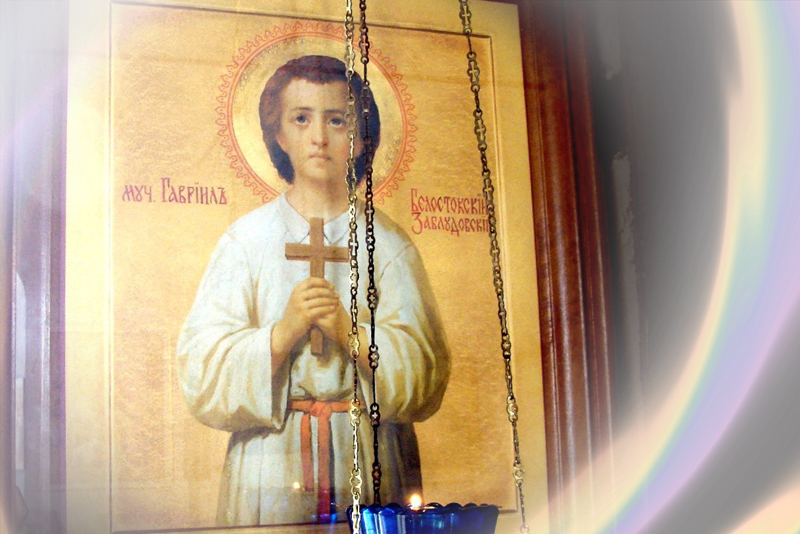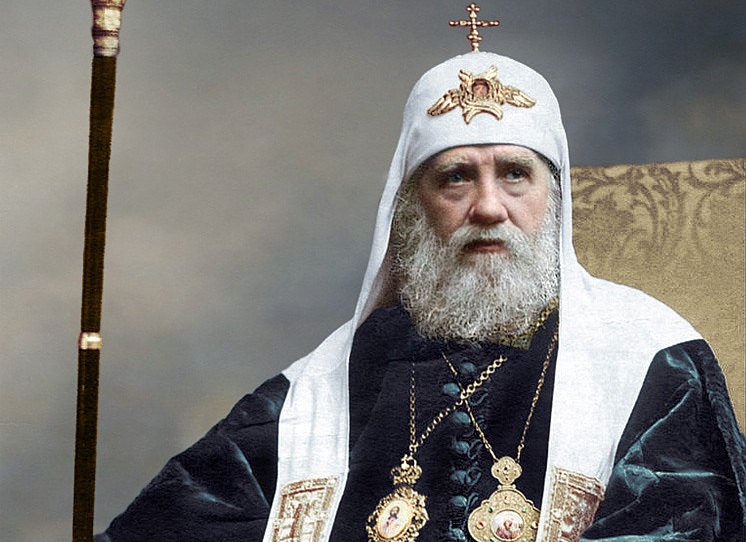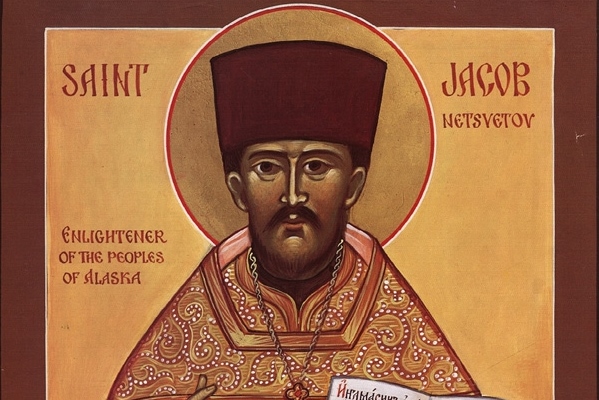
The Lord said, ‘Let the little children come to me, and do not stop them; for it is to such as these that the kingdom of heaven belongs’ (Matthew 19:14). Despite this, some Christians refuse to baptize their children, arguing that they cannot have conscious faith, and therefore should not be baptized. The experience of the Orthodox Church shows the opposite. Children can reach the degree of faith and holiness that is seldom attained even by mature people.
In Holy Scripture
According to the chronology of the biblical books, the first saints not reaching adulthood were the three youths thrown by Nebuchadnezzar into the Babylonian furnace for refusing to worship an idol and remaining unharmed by the grace of God (Dan. 3). The youths Hananiah, Azariah and Misael are revered as forefathers.
The seven Maccabean brothers who suffered in 166 BC from the wicked king Antiochus Epiphanes (2 Mac. 6: 18-7: 41) are venerated among the martyrs for the faith. Most likely, not all of them were adults.
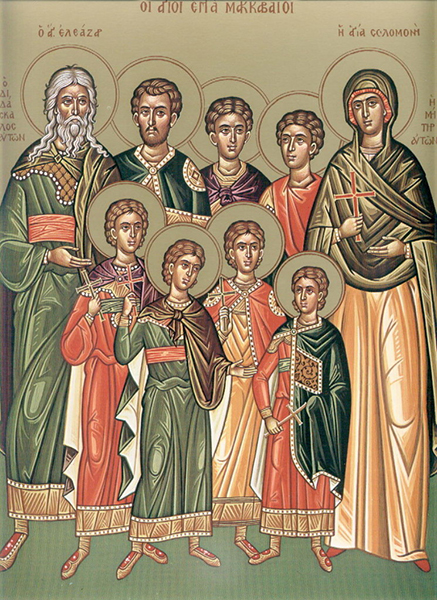
The first martyrs for Christ were the 14,000 babies killed by order of King Herod, who was looking to do away with the Messiah and the King of the Jews.
Martyrs
In the first centuries after the birth of Christ, the persecution by the Roman pagan emperors led to the appearance of a great many martyrs who suffered for their faith in the Son of God. The Church canonized Faith, Hope and Love with their mother Sophia, as well as Jason of Rome, Cyricus and Julitta, Pancras of Rome, Agnes of Rome, Aquilina the Elder, the Forty African martyrs and other saints.

Of course, Christians suffered for their faith not only from the Roman rule. Martyr Basil of Mangazeya, rejecting sinful harassment, was falsely accused by his offender of committing a crime and died under torture. Saint Dymphna was killed by her own pagan father because of her refusal of intimacy. The infants John of Uglich and Gabriel of Białystok were abducted and tortured. The person who tortured Gabriel crucified the boy in the same way Christ was crucified.

The most recent child martyrs in history are Alexei and Anastasia Romanov, members of the Russian royal family, shot in 1918 by the communists.

The Righteous
There are children whose righteous deeds and virtues make them worthy of sainthood already in their short earthly lives, after which they continue to do good.
Princess Juliana of Olshansk lived in chastity, honored her parents, was favorably disposed towards common people and, above all, was engaged in charity. Some time after her death, her coffin with a silver tablet was discovered. Finding Juliana’s body incorruptible, people transferred it to a church. The veneration of the princess was established soon after, since many miracles and healings began to take place near her coffin.
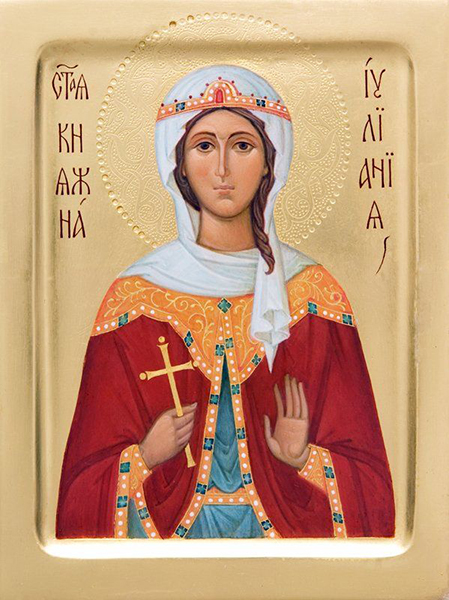
Artemius of Verkola was a meek and God-fearing boy who refused to play games since early childhood and was distinguished by obedience and hard work. Artemy died suddenly, from a lightning strike, caught by a thunderstorm in the field. Superstitious fellow villagers left the body of the deceased from sudden death in the forest without the appropriate church funeral. 22 years later, the deacon of the local church saw light emanating from the forest. It was coming from the incorruptible body of St Artemius. The deacon placed the body of the saint on the church porch. At that time there was an epidemic and many people were healed after venerating the relics of the saint.
Venerable Saints
This title in the Orthodox Church refers to those saints who were monks during their lifetime, which is seldom the case with children. The above is also true for hieromartyrs or holy hierarchs, since the sacrament of the Priesthood is inaccessible to children due to their age. There are however a few exceptions where children were tonsured as monks.
There are two venerable youths in the Russian Church: Bogolep of Chorny Yar and Gerontiy of the Caves.

From the first years of his life, Bogolep lived a devout life, observing fasting on Wednesdays and Fridays. Hearing the bell ringing, he would cry and ask to be carried to church. The youth was in poor health and suffered from many illnesses plaguing him one after another. Struck by a meeting with a certain monk, he asked his parents to allow him to be tonsured into schema. On the following day after the tonsure, he recovered from a lingering illness, but fell ill again and died a day later. At that time he was 7 years old. The veneration of the holy venerable child quickly spread in his homeland and was associated, first of all, with a large number of healings and miracles that occurred shortly after his death. One such miracle happened to a priest and icon-painter Fr John and brought Bogolep great fame outside his homeland. Fr John, who suffered from an eye disorder and was half-blind, fully regained his sight after painting an icon of St Bogolep.
Very little is known about the life of St Gerontiy of the Caves. He took monastic vows in early childhood, and was a canonarch all his life at the Kiev-Pechersk Monastery. He died at the age of 11-12. Archdeacon Paul of Aleppo, who visited the monastery three centuries after the monk’s death, wrote, “There are bodies of two youths here. Their heads are yellowish in color and still exude myrrh”.
Conclusion
“Blessed are the pure in heart, for they will see God” so says the Lord (Matt. 5: 8). There is hardly a heart more pure than one of a child. It is this heartfelt purity that we see in children saints. Their sincere craving for the Lord, the desire to serve Him, as well as the purity of their thoughts and faith is glorified by the Church and is in no way inferior in dignity to the virtues of adult saints. This makes every child worthy to be a member of the Church. And this makes the children, glorified by the Church, examples for us all.

